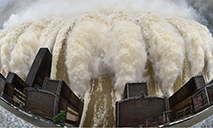How far can U.S. gas prices go above current historical highs
WASHINGTON, June 14 (Xinhua) -- Gas prices in the United States have continuously hit new record highs in recent days. But one question remains - could they spike even higher?
"I don't think we're far away" from the highest prices, said Patrick De Haan, head of petroleum analysis at GasBuddy, as reported by CNBC.
"I don't think it would eclipse 5.50 (U.S. dollars a gallon). I would say 5.25 is the top, but again, the market is unhinged," he said.
However, if there are any disruptions this summer, such as from hurricanes, prices could spike, he added.
Gasoline prices hit the 5-U.S.-dollar mark for the first time ever on Saturday, further stinging millions of drivers who have been feeling pain at the pump.
The milestone price increase also occurred amid the worst U.S. inflation in 40 years, as the U.S. Federal Reserve plans to hike interest rates in a bid to get record consumer price increases under control.
Tuesday's national gasoline price was 5.016 U.S. dollars per gallon, according to American Automobile Association (AAA), a national auto club. That's significantly higher than 3.080 U.S. dollars per gallon the same time last year.
Before oil prices started skyrocketing this year, the previous high was 4.11 U.S. dollars, set in 2008, according to AAA.
Some analysts predict that gas prices may not hit their peak until around mid-July, when the summer road trip season tends to hit its highest point.
Usually, gasoline prices peak in mid-May, but this year they've continued to surge.
Bernard Baumohl, chief global economist at The Economic Outlook Group, told Xinhua that while some have curtailed their gasoline use, others are unable to do so.
That's because so many Americans depend solely on their cars to get to work or cart their kids off to school.
At the same time, many Americans are hitting the road this summer after being cooped up at home for two years during the COVID-19 pandemic, said Baumohl, who was ranked by The Wall Street Journal in 2019 as the most accurate economic forecaster in the previous year's economic survey.
So, the United States may yet see increased demand for gasoline, Baumohl said.
"We're not even yet at the peak of summer driving season. So if it's 5 dollars now, I don't see any reason why anyone should be optimistic that it's going to stop here and go back down," Baumohl said.
Some gas stations in California are even at 10 U.S. dollars a gallon, although that state has the highest gas sales tax of any state across the country.
"We might see some people saying 'that's it, I'm cutting back.' Others saying no, I'm going to take this last big trip with the family, and I'm willing to pay," Baumohl said.
Andrew Lipow, president of Lipow Oil Associates, a consulting firm, told Xinhua: "I think we're about to top out."
"Gasoline prices are temporarily peaking and we could see them fall in the next couple of days," he said.
Consumers will be driving quite a bit this summer, but the high price of gasoline may force them to take shorter trips, Lipow said.
When asked whether gasoline prices could climb higher, Dean Baker, senior economist at the Center for Economic and Policy Research, told Xinhua: "I wouldn't bet on it, but I also didn't expect to get this high. I would say it really depends on whether the war in Ukraine causes more oil to be withdrawn from world markets."
Record gas prices are particularly harmful to Americans who live paycheck to paycheck, and particularly to those in rural areas where there is no public transportation.
Mark Zandi, chief economist at Moody's Analytics, said: "By my calculations, the typical household is spending about 160 (U.S. dollars) more on gas a month than a year ago."
"That's a big bite," Zandi said.
Sanctions on Russia, one of the world's biggest suppliers, have resulted in a supply shortage and sent prices into the stratosphere.
Supply of gasoline has also decreased because the United States has lost around 1 million barrels per day of refining capacity since the arrival of COVID-19.
One silver lining is that keeping the gas tank full requires a much smaller chunk of the household budget than in years past. Much of that is because of increased fuel efficiency in vehicles, experts said.
Drivers spent an average of 20 cents to a mile on gasoline, as of June this year. That's a sharp contrast from 1980, when that would have cost 30 cents in today's dollars, according to a CNBC analysis.
Photos
Related Stories
Copyright © 2022 People's Daily Online. All Rights Reserved.









